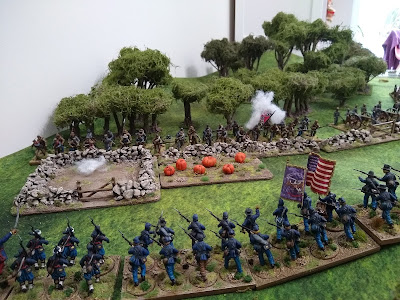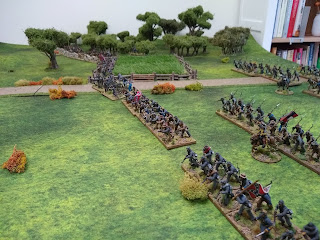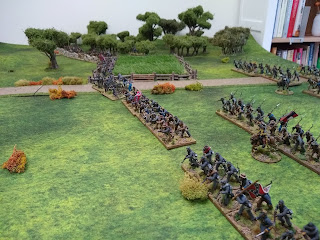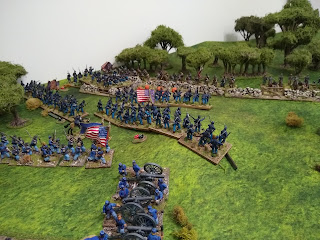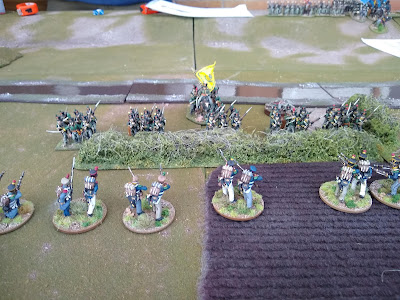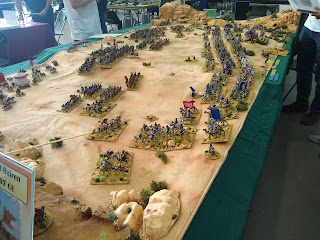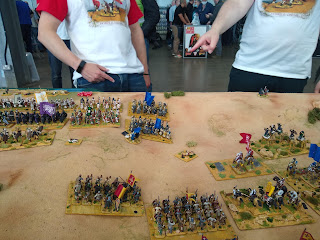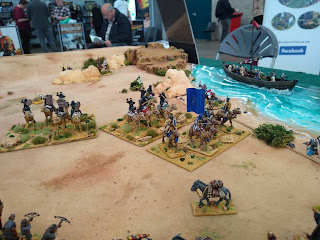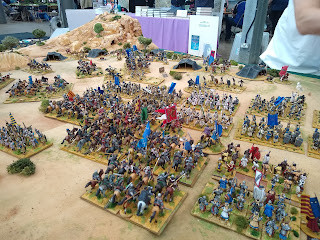Yesterday Steve, Dave and I dusted off the American Civil War collection and set to with a fictitious engagement between the Union and Confederate forces.
A strong Union infantry brigade, supported by a small supporting cavalry brigade was about to be set upon by three Confederate brigades. Two Union brigades were rushing to support, while a fourth Confederate brigade was making its way to the sound of the guns.
We would be using the Pickett's Charge rules from Reisswitz Press part of the Too Fat Lardies stable and very similar to the General d'Armee we have been using a lot of late.
Based on the availability of the comfy chair on that side of the table, Steve took the Confederates while Dave and I played the Union forces.
The Confederate right was screened by a brigade well ensconced behind walls and fences while on the left they were ready to drop on the Union forces with two brigades well supported by artillery.
A good Union command roll saw the first reserve brigade committed on turn two, suddenly the Confederate plans went from attack to defence already.
The screening brigade to our left proved to be a tough nut to crack, the Union troops threw themselves against the numerically much inferior Confederates only to again and again be repulsed.
One huge factor in this game was the distribution of the 2d6 dice rolls, I know that we often perceive that rolls at the stop and bottom of the range occur more frequently than they do, but in this game they demonstrably did. We played about twelve turns and in that time double six was rolled five times for initiative by one of the players, in one case trumping an 11!
Likewise really low rolls were the norm, one of the Confederate batteries finished the game on six casualties, five of which had been fatigue casualties on the bombardment roll.
Eventually the Union reserves were all in play and a concerted attack launched against the Confederate lines. It did not seem the most auspicious place to commit, with a Confederate regiment behind a fence supported on each flank by a battery of guns, but here is where the hammer fell.
Although the Union forces on the right flank were driven back in disorder, the Confederates in the cornfield were whipped, skedaddling for their lines taking their guns with them.
The hole burst into their lines caused them to also abandon their position lining the wall on their right and fall back through the woods.
Unfortunately for the Union forces this breakthrough had been at a cost and the breakthrough could not be exploited as the Confederates has two fresh brigades to counter it and precious little screening their centre.
It was great to reacquaint ourselves with the rules and collections, I do hope that we get to do it again soon.



